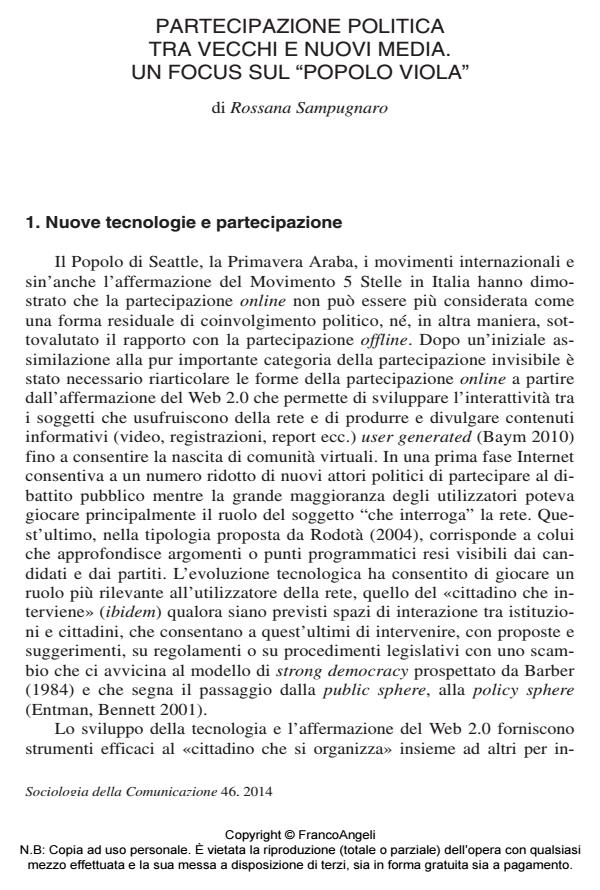Political Participation between Old and New Media. A Focus on "Popolo Viola"
Journal title SOCIOLOGIA DELLA COMUNICAZIONE
Author/s Rossana Sampugnaro
Publishing Year 2014 Issue 2013/46
Language Italian Pages 28 P. 150-177 File size 1228 KB
DOI 10.3280/SC2013-046010
DOI is like a bar code for intellectual property: to have more infomation
click here
Below, you can see the article first page
If you want to buy this article in PDF format, you can do it, following the instructions to buy download credits

FrancoAngeli is member of Publishers International Linking Association, Inc (PILA), a not-for-profit association which run the CrossRef service enabling links to and from online scholarly content.
International movements demonstrated that online participation cannot be classified as a residual type of political involvement, nor in any other way, understated relationship with offline participation. Divided between normalization and mobilization theses, scientific studies converge giving significance to the opening of new spaces for political participation on the net. The research is on relationship among types of political participation and investigates Purple People - a movement born and grew on the web - able to impose its agenda to traditional media for a short time. Beyond the simplifiers interpretation frames of the press, the study of the political and socio demographic profile of a participants selection and the analysis of their media menu return a complex picture of the relationship between online and offline where more than caesura, one can see contiguity.
Keywords: Political participation, digital activism, Popolo Viola
Rossana Sampugnaro, Partecipazione politica tra vecchi e nuovi media. Un focus sul "popolo viola" in "SOCIOLOGIA DELLA COMUNICAZIONE " 46/2013, pp 150-177, DOI: 10.3280/SC2013-046010